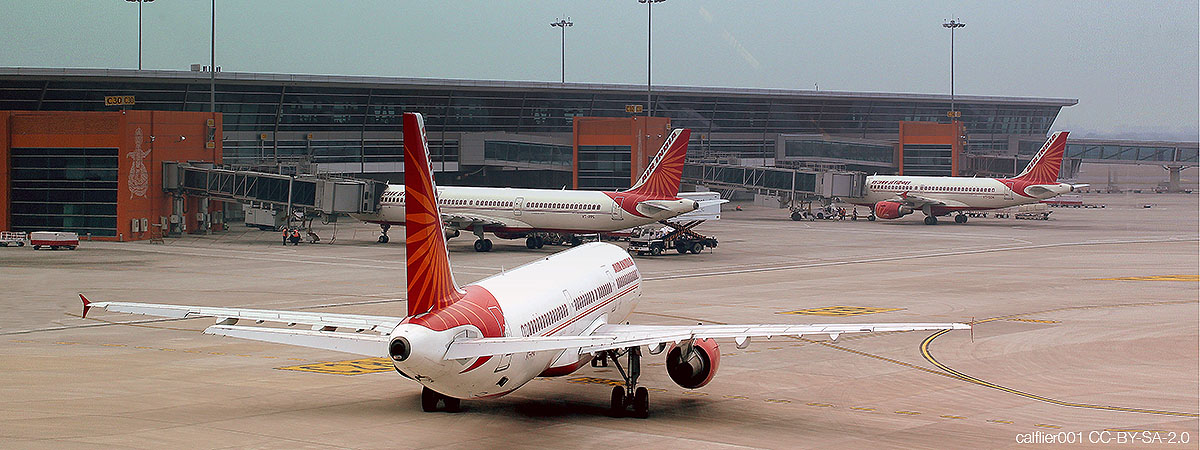Some countries are beginning to operate regular flights within what is being called the “new normal”. India is one such country. This is a case with special characteristics that make it necessary to open ahead of other areas.
Large territories, like India, need air traffic for their societies to continue developing. Their experience will be a starting point for many other countries.
India is an immense country. It covers 3.28 million kilometres while the entire European Union’s 27 countries occupy nearly 4.5 million. This immense area needs air traffic to stay connected. India’s population is also enormous with around 1.2 billion inhabitants compared to under 450 million in the EU. Furthermore, the official impact of COVID-19 on this Asian country is relatively low compared to other areas. These circumstances have led to the decision to open airports to domestic flights, and for this purpose the Airports Authority of India (AAI) has published new SOPs (Standard Operating Procedures). Here are a few highlights:
- Passengers must undergo a thermal screening and have the government’s official tracking and tracing app, Aarogya Setu, on their mobile phones, with the exception of children under 14 years old. If a passenger does not have this app, or if the app does not display green, they will not be allowed to board the aircraft.
- Passengers should arrive to the airport two hours before departure.
- Passengers will be allowed to enter the terminal building if their flight departs within the next four hours.
- All passengers should wear masks and gloves.
- In waiting areas, some seats will be marked or cordoned off to maintain social distancing.
- All personnel must have hand sanitizer and personal protection equipment as directed by the Ministry of the Interior (Home Ministry).
- Airport trolleys will not be allowed inside the airport except in special circumstances in which case they will need to be disinfected.
- Airport operators should provide a disinfection service for all luggage before it enters the terminal.
- All terminal entrances will be open to avoid crowding in specific areas.
- Social distancing markers or stickers will be placed in entryways and queues for check-in, security and boarding.
- Bleach-soaked, sanitizing doormats will be placed at entrances to disinfect shoes.
- Counters will be equipped with plexiglass screens or face shields for personnel who interact with passengers.
- Newspapers and magazines will not be available throughout the terminal.
- Employees with a high fever, difficulty breathing, or cough will not be allowed to enter the airport.
- When flights land, passengers must exit the plane sequentially in batches.
These measures are sensible and generally correct and can be extrapolated to other airports and countries. Even though thermal screening has proven to be of little use, it could detect some clearly ill individuals. This procedure together with marking distances in all queues will probably be among those that the majority apply, along with blocking off and separating seats in waiting areas. Plexiglass screens and sanitizing mats will also be common.
Measures related to managing baggage could be more complicated. On one hand, there is the issue of prohibiting trolley-style hand baggage and on the other, disinfecting all check-in baggage. Disinfection will surely be done manually by handling personnel. This is not a problem in India, a country with plenty of manpower. In other places, however, it could be more complicated or unfeasible and require automation. Otherwise, it will increase fees or ticket prices making it even harder to restart operations.
And finally, there is a mobile phone app. Requiring passengers to not only have a mobile phone but also install a tracking/tracing app clashes with the culture of freedom valued by most countries around the world. This app can also detect if someone has been near a contagious individual and sets off an alarm when consulted by authorities, banning that person from flying. This alleged interference in personal freedom, together with the fact that many countries do not have this technology available, nor the capabilities to analyse the data and generate the appropriate alarms, makes it very difficult to implement. However, if India’s experience with this type of app shows it to be an effective solution to control the spread of Covid-19, then it is possible that more countries will develop and require it.
In conclusion, India’s example of adopting these measures makes it possible to consider that the European Union and countries and regions of comparable size and population could soon take the same path. In order to do so, they must look at themselves in the mirror of those who are returning to normal, the “new normal”, in order to follow their steps (or not) and learn from their successes and mistakes.



